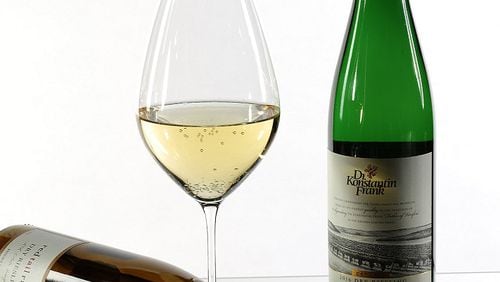In the continuing effort to spread the word that not all riesling is sweet, we now turn our focus to the Finger Lakes region of New York.
Of course, riesling is not the only grape grown in the Finger Lakes region. The area also turns out other whites, reds, rosés, sparklers and dessert wines. Furthermore, dry riesling is not the only style the grape variety is made into in the Finger Lakes region. But despite those qualifiers, there is no question that riesling is the region’s most popular and important wine style.
From bone dry to viscous and nectary (and all styles in between), rieslings from the Finger Lakes are among New York’s greatest wines. The state consistently occupies the No. 2 or 3 spot in overall production of wine nationally, and the Finger Lakes region is the state’s largest and arguably most-important wine region. Home to the New York Wine & Culinary Center and producing the lion’s share of New York’s wine, the region is also the state’s de facto capital of wine.
About 250 miles from New York City, the Finger Lakes region lies in the western half of the state, southwest of Syracuse and southeast of Rochester. It is a popular, picturesque vacation destination, with 11 glacial lakes running generally north-south below Lake Ontario, with charming small towns dotting the region. Besides offering verdant views, the lakes naturally cool the region, creating a climate suitable for the beloved and often-misunderstood grape variety.
Grapes have been grown in the Finger Lakes area since the early 19th century, and the area’s first commercial winery was established in the middle of that century. But a little less than 100 years later, in 1951, Dr. Konstantin Frank, a professor of plant sciences with a doctorate in viticulture, left the Ukraine for New York, eventually convincing himself, and others, that delicate European grapes (Vitis vinifera) could thrive there alongside the hearty, long-established native Vitis labrusca and hybrid grapes. He was aided in his early experiments by Charles Fournier, a French immigrant, former Champagne-maker and president of a nearby winery. Some of the first vinifera grapes they planted were riesling, and more than a half-century later, the grape variety is the star of the region and the state.
There are three official appellations in the Finger Lakes region: the Finger Lakes AVA (American Viticultural Area), established in 1982; Cayuga Lake AVA (1988); and Seneca Lake AVA (2003). No other wine region in New York has more wineries than the Finger Lakes region (close to 140), and most of them hug the shores and nearby land around four of the lakes: Keuka, Cayuga, Seneca and Canandaigua.
While none of the lakes is more than a few miles wide (perhaps making them resemble finger bones, rather than actual fingers), they are still formidable bodies of water that have a significant effect on the local climate, and riesling benefits from it. The region is home to more than 9,000 acres of vineyards (not all of it fine wine grapes), with about 1,000 of them dedicated to riesling alone. Those long, narrow and deep lakes create the ideal climate for riesling, keeping the area cool in the summer and acting as a heat sink to retain warmth in colder seasons.
These dry rieslings from the region are crisp and vivacious, sometimes tangy, sometimes offering riper, rounder, less-puckery fruit. If you have ever been turned off by a riesling for being too sweet, you don’t have to worry about that here. The wines recommended below are from the region’s “dry” category. Rest assured you are reaching for the right bottle with two-telltale words: “Dry Riesling.” No specialized riesling knowledge is needed in this case — just the ability to read.
Look for Finger Lakes Dry Riesling, and you will be on track to pair it with light appetizers, shellfish and other seafood, chicken and pork. They would also make great apertifs — these bottles are vibrant and alive, a perfect way to wake up your palate before a meal.
RECOMMENDED
Below are notes from a recent tasting of New York Finger Lakes Dry Riesling. They are listed in ascending order, according to price.
2016 Dr. Konstantin Frank Dry Riesling. With notes of passion fruit, lime and other citrus, plus apple skin and peach on the finish. This wine is bright and crisp. $16
2015 Ravines Dry Riesling. Floral and full of citrus, apple, minerality, salinity and bright acidity, this wine clocks in at a manageable 12.5 percent alcohol. $18
2015 Forge Cellars Classique Dry Riesling. This one offers minerality, almond, orange zest, citrus and a whisper of smoke — soft and luscious with bright acidity. $19
2016 Red Tail Ridge Winery RTR Estate Vineyard Dry Riesling. A whiff of anise leads to notes of orange blossom, while minerality and lingering peach deliver an elegant softness. $19
2015 Red Newt Cellars Dry Riesling. Richer and weightier than the other wines but still finishing dry, this wine offers tropical fruit, lime and a tiny kiss of honey. $19.50
2016 N. Kendall Wines Nathan K. Dry Riesling. From old vines near Seneca Lake, this one tastes of apple, pear, citrus and tropical fruit, leading to a crisp finish with a lingering nuttiness. $25
About the Author






